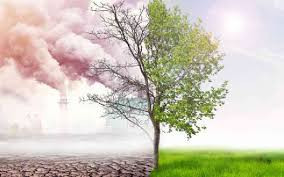Anyone who believes that climate change is not real needs a reality check. It is undoubtedly one of the most pressing global challenges today, with impacts felt across every continent and every facet of life.
Here in Kenya, a nation celebrated for its rich biodiversity, lush landscapes, and vibrant communities, the effects of climate change are becoming increasingly evident. The story of the Nairobi River exemplifies just how real and urgent this crisis is.
Historically, the Nairobi River was a vital artery for the region, supplying clean water for domestic use, irrigation, and agriculture. It was known for its strength, vitality, and ability to sustain life in countless ways.
Follow The Standard
channel
on WhatsApp
In my small hometown of Kakuret, there is also a river named Nairobi. It too is now drying up, something the elders say has never happened before. This river was once a lifeline for the local community. During the long rains, it could swell so intensely that it would even sweep elephants from the mountain. It symbolised abundance and a thriving, healthy ecosystem.
However, the relentless advance of climate change has drastically altered this reality.
Rising temperatures have led to increasingly erratic rainfall patterns in Kenya, causing cycles of severe drought and sudden floods. The once-mighty Nairobi River has dwindled. In Kakuret, it now often shifts from a roaring force to a faint trickle. Even in the rainy season, its swelling is less predictable and less intense. In extended dry spells, the river shrinks or disappears entirely. This change has had profound consequences, not just for the environment, but also for the communities that depend on it.
The river’s decline reveals the multifaceted impacts of climate change.
Lower water levels mean less water for farming and household use, directly affecting food security and daily survival. Local biodiversity is also under threat as habitats shrink. Pollution, worsened by illegal dumping and poor waste management, adds further strain. As the river’s flow weakens, pollutants become more concentrated, degrading water quality and harming aquatic life.
These environmental changes are reshaping the social and economic fabric of towns and villages. Communities that once relied on the river for fishing, watering livestock, and even transport are now struggling. Young people, who saw the river as a source of livelihood, are being forced to migrate due to diminishing opportunities, leading to increased economic hardship.
Addressing these challenges requires a coordinated and inclusive approach. Local communities must be empowered to lead conservation efforts, including sustainable water management and reforestation. Protecting mountain forests that feed these rivers is critical to maintaining their flow. Moreover, integrating climate adaptation into local development plans can help communities better cope with water scarcity and weather extremes.
Kenya has taken notable steps toward climate action, from expanding renewable energy to introducing policies to curb carbon emissions. Yet rural and marginalized areas like Kakuret need targeted support. Education and awareness campaigns are crucial to inspiring community-led conservation and encouraging sustainable practices.
The story of the Nairobi River, both in the city and in Kakuret, is a microcosm of the broader climate crisis. Its transition from a powerful, life-giving force to a fragile, uncertain stream underscores the urgency of action. Safeguarding rivers and ecosystems means protecting the livelihoods, health, and futures of millions. As the climate crisis deepens, it is imperative for governments, communities, and individuals to work together to restore and preserve Kenya’s natural heritage, for ourselves and for generations to come.
The writer is a communications consultant
Follow The Standard
channel
on WhatsApp
By Mutahi Mureithi
